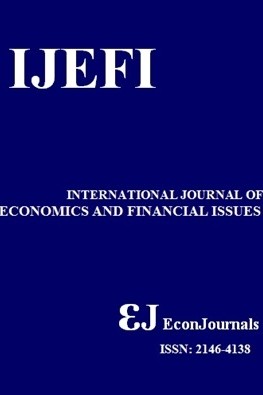Financial Literacy and Risk Tolerance towards Saving and Investment: A Case Study in Malaysia
Financial Literacy and Risk Tolerance towards Saving and Investment: A Case Study in Malaysia
Innovation in the financial market has provided more flexible choices of financial products and services to the consumers. Financial products and services are becoming more complex and not easily comprehendible by many consumers. Due to this, consumers with low financial literacy (FL) may face difficulties to make informed decisions on their savings and investments. Therefore, the purpose of this study is to identify the level of financial literary and its relationship with risk tolerance (RT) towards savings and investments in the context of Malaysia. A total of 172 respondents have been selected using convenience sampling method through online and manual survey. Data were analysed descriptively and statistically using nonparametric techniques, which include Chi-square and Spearman’s Rank Correlation to examine the relationship between variables studied. The results suggest that the overall FL in Malaysia is at moderate level. The study also found that overall FL has a positive significant relationship with the level of RT towards saving and investment. More specific analysis, however, found that only advance FL has a relationship with RT levels. Meanwhile, basic FL was not correlated with the level of respondents’ RT.
Keywords:
Financial Literacy, Risk Tolerance Malaysia, Investment, saving,
- Başlangıç: 2011
- Yayıncı: İlhan ÖZTÜRK
Sayıdaki Diğer Makaleler
Talla M ALDEEHANİ, Amani Kh. BOURESLİ
Lya Paola SİERRA, Luis Eduardo GİRÓN, Carolina OSORİO
- Mu’izzuddin, - Taufik, Reza Ghasarma, Leonita Putri, Mohamad Adam
Mohammed Abdullah Al Momamni, Mohammed Ibrahim Obeidat
Does Exchange Rate Volatility Deter Trade in Sub-Saharan Africa?
Christelle MENİAGO, Joel Hinaunye EİTA
Forecasting Gold Price with Auto Regressive Integrated Moving Average Model
Saeid Ebrahimipour Farasangi, Amirhossein Taebi Noghondari
Tax Avoidance and Corporate Governance Mechanisms: Evidence from Tehran Stock Exchange
Separating and Merging Cash Flows: Investigating Five-element Cash Flows Statement
Hojatollah Atashi GOLESTANİ, Seyyed Mohammad HOSSEİNİ, Ehsan MEHRJOO
